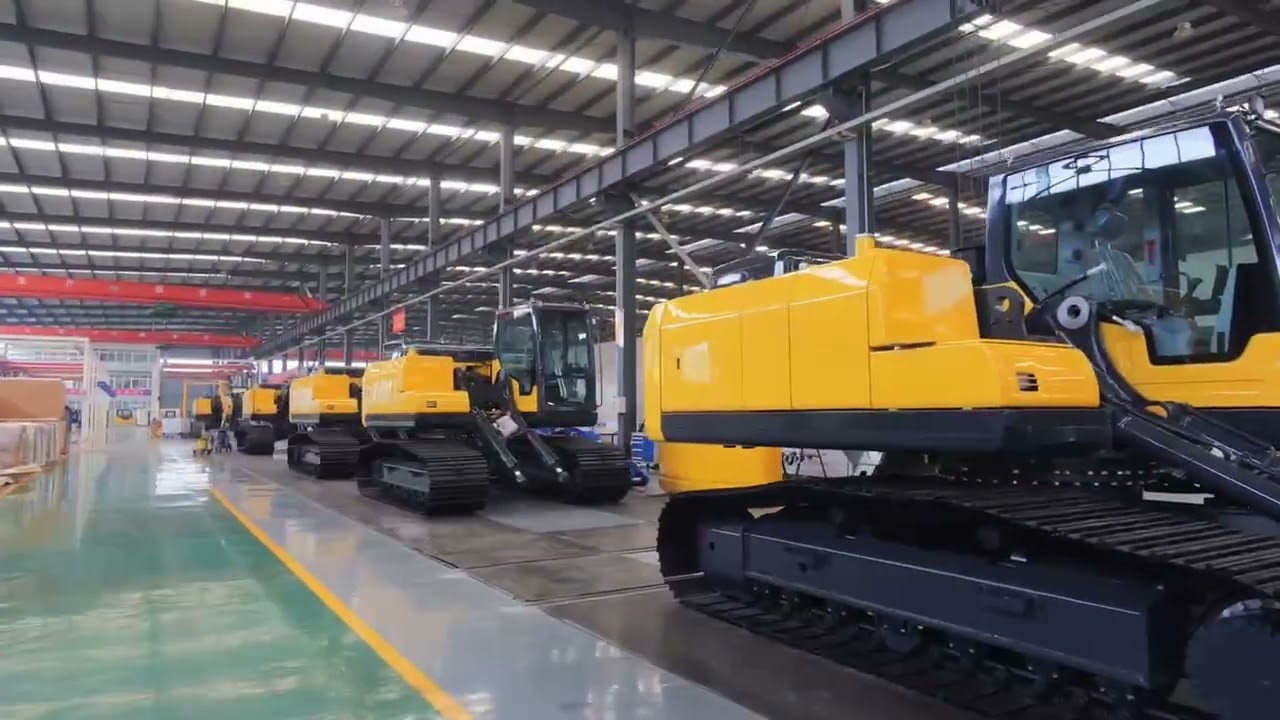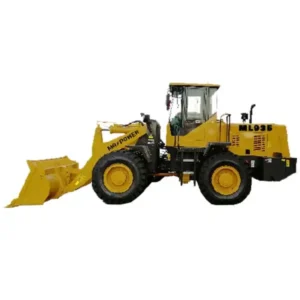Introduction
Front wheel loaders, sometimes called bucket loaders, are versatile machines used in construction, agriculture, and industrial settings for material handling, digging, lifting, and loading jobs. Before operating a front wheel loader, proper preparations must be made to ensure efficient, safe, and effective use of the equipment. This blog post outlines seven key preparations every front wheel loader operator or owner should make prior to using the machinery. Making these advance preparations will lead to optimum loader performance and safety.
Get Proper Training

Operating a front wheel loader, like running any heavy equipment, requires proper training. Loaders have complex controls and safety mechanisms that must be thoroughly understood. Seek formal instruction in loader operation, maintenance, and safety. Most equipment dealers and rental facilities offer training courses. You’ll learn essential skills like:
- Loader controls and instruments
- Starting and shut-down procedures
- Driving and maneuverability
- Implement attachment and use
- Inspection and basic upkeep
- Occupational hazards and risk prevention
Hands-on training time with the loader is also critical. New operators should log at least 8 to 10 hours with an experienced front wheel loader operator to get comfortable handling the machine.
Assess Worksite Conditions
Before using a front wheel loader, survey the worksite conditions to determine any constraints or hazards the machine or operator may encounter.
Important factors to assess include:
- Terrain type – mud, slopes, holes
- Ground surface firmness and stability
- Presence of underground utilities
- Overhead obstructions
- Proximity to structures, vehicles, or personnel
- Weather conditions – rain, wind, reduced visibility
Identifying potential hazards or limitations ahead of time allows steps to be taken to properly prepare the site, use appropriate loader implements, or modify machine operation to promote safe equipment use.
| Hazard Type | Preparation Steps |
|---|---|
| Uneven terrain | Fill holes, clear debris, use wider tires |
| Weak soil | Use outriggers, choose smaller bucket |
| Underground pipes | Request marking, use hand tools if needed |
| Overhead wires | Avoid area or arrange to de-energize |
| Weather issues | Stop operations if too dangerous |
Select Correct Attachments
Front wheel loaders utilize a variety of detachable implements or attachments that connect to the loader arms to accomplish different tasks. Common attachments include:
- Buckets – digging, scooping, lifting loose material
- Pallet forks – moving pallets of goods
- Rake or broom – clearing and leveling
- Augers – drilling holes in soil
- 4 in 1 bucket – scooping, grading, clamping objects
Choosing attachments suited to the planned loader work maximizes productivity and safety. For example, a 4 in 1 bucket would allow an operator to scoop, carry, and dump material as well as mechanically grab or clamp objects. Using the wrong implement, like a bucket not sized for the task, makes jobs far more difficult and risky.
Perform Pre-Start Inspection
Conducting a thorough pre-start walkaround inspection of the front wheel loader is vital before any operation session. This inspection checks for any deficiencies or hazards that could compromise safe use of the machine.
Operators should check things like:
- Fluid levels – fuel, hydraulic oil, coolant, transmission
- Leaks – fuel, oil, coolant, hydraulics
- Hydraulic hoses – damage, leaks
- Tires – pressure, tread wear, damage
- Wheel lug nuts – loose or missing
- Structural – cracks, loose/missing parts
- Attachments – damage, oil leaks, locking pins
- Lights, alarms – proper operation
- Gauges, controls – proper function
Catching any issues early prevents breakdowns, failures, or accidents when the loader is in use. Conduct start-up inspections diligently before each work shift. Consult the equipment operator’s manual for full guidance on pre-start check procedures.
Use Proper Gear and Safety Equipment
Loader operators must utilize appropriate protective gear and safety equipment to shield against workplace hazards. Mandatory equipment includes:
- Hard hat – protects head from falling debris
- Safety glasses – shield eyes from dust and flying objects
- Gloves – prevent skin abrasions and burns
- Steel toe boots – protect feet from heavy items
- Hearing protection – ears shielded from loud noise
- High visibility vest – stand out to others around machine
Also use additional gear suited to the operating environment, like respiration masks to filter dust or insulating clothes in extreme cold weather. Rigorously employ all recommended personal protective equipment (PPE) when running a front wheel loader. Never take shortcuts that compromise safety.
Secure Work Area

The loader operator should properly set up the work area before starting machine tasks. This includes:
- Blocking off zone around loader to pedestrians
- Removing loose clutter that can fly up when bucket moves
- Setting up warning signs/indicators machine is operating
- Ensuring good lighting if working at night
- Making channels or areas to dump gathered material
- Staging pallets or trucks to load out material handling tasks
Proactively preparing the space makes jobs quicker, more efficient, and safer. An organized work area also prevents unwanted downtime from obstacles interfering with loader bucket movements.
Confirm Preventative Maintenance Schedule
Routine preventative maintenance is imperative for front wheel loaders to keep operating reliably and safely. Major maintenance activities include:
| Task | Frequency |
|---|---|
| Engine oil/filter change | Every 250 hours or bi-annually |
| Fuel filter replacement | Every 500 hours or annually |
| Hydraulic fluid change | Every 1,000 hours or annually |
| Clean air filter | Daily or as needed |
| Drain water from fuel tank | Daily |
| Grease fittings | Every 2 weeks or 100 hours |
| Check tire pressure/wear | Weekly |
| Inspect belts, hoses | Weekly |
Consult your equipment dealer or operator’s manual to establish a suitable preventative maintenance schedule. Always confirm necessary maintenance is up to date before undertaking loader work. Performing maintenance at proper intervals maximizes uptime and minimizes repair costs over the machine’s lifetime.
Conclusion: Front Wheel Loader
Front wheel loaders are highly useful equipment on jobsites when used properly. But their operation comes with hazards if not handled safely and appropriately. Make the seven preparations outlined in this article prior to employing a front wheel loader for any task. Taking steps to get training, evaluate site conditions, select suitable attachments, complete inspections, use protective gear, secure the workspace, and adhere to maintenance schedules promotes safe, efficient loader operation. Advance planning minimizes risk and ensures you get the most productivity from the equipment.
FAQ
Q: How much training is needed to operate a front wheel loader?
A: At minimum 8-10 hours is recommended with an experienced operator to properly and safely run a front wheel loader before working independently. Formal instruction in controls, procedures, maintenance, and hazards is also advised.
Q: What hazards can occur from overlooked front wheel loader maintenance?
A: Poor maintenance leads to more breakdowns, costly repairs, extended downtime, and even catastrophic failures putting the operator and others at risk. Sticking to prescribed maintenance intervals prevents these hazardous occurrences.
Q: Can front wheel loaders be used with implements besides buckets?
A: Yes, loaders can utilize many attachments like pallet forks, augers, brooms, rakes, grapples, and others. Matching the attachment to the planned task makes the loader far more versatile.
Q: What are some pre-start inspection checks unique to front wheel loaders?
A: Specific loader inspection items include leak checks on hydraulic hoses and cylinders since leaks can cause implement function loss. Also inspect machine frame, lift arms, and bucket for any cracks indicating metal fatigue.
Q: Why establish a blocked off safe zone around operating loaders?
A: Loaders swing heavy, dangerous implements that can strike personnel or objects. Cordoning off an operating envelope protects bystanders. The machine also needs open areas to maneuver implements unimpeded.









-150x150.webp)
